Ada Lovelace
Enchantress of numbers
Enchantress of numbers
AdaLod is a project that intends to focus on the study of the domain represented by the historical figure of Ada Lovelace and explore the resources related to it through the creation of an organized environment that can describe them and produce new semantic data.
Dec. 10, 1815 - Nov. 27, 1852
Regarded by many to be the world's first computer programmer, Ada Lovelace, a British noblewoman and mathematician, was known for her valuable contributions to Charles Babbage's analytical machine and especially for developing an algorithm that could generate Bernoulli numbers. Through the latter, Ada anticipated how computational machinery would be able to process all sorts of information.

Daughter of the poet George Byron and mathematician Anne Isabella Milbanke, she was initiated early on toward an education in mathematics, proving to be highly talented. Among her teachers was Mary Somerville, a distinguished mathematician who encouraged her to pursue her studies.
In 1833 Ada met Charles Babbage and was so intrigued by his work that she began a correspondence and study of the methods of calculating his differential and analytical machines. Babbage himself asked her to translate Luigi Menabrea's article into English and add some personal notes. Thanks to his enlightening comments, Ada observed how the machine could represent a programmable tool and a process non-numerical information.
Notes have been identified in alphabetical order and in "note G", Lovelace described an algorithm for the analytical machine that allowed it to compute an element of Bernoulli's series of numbers without need to calculate its antecedents. This allowed her to develop the first program for a calculator, now generally recognized as the first computer program in history.
“If you can't give me poetry, can't you give me "poetical science"?” ― Ada Lovelace
This section presents ten different types of items related to the topic of the idea and described on the web by relevant cultural institutions or data collection entities. The items were chosen so as to obtain meaningful connections in terms of people, places, dates, and concepts, with the chosen topic.

Painting made in 1840 by Alfred Edward Chalon. Ada was looking front, in evening dress with mantilla, holding fan.
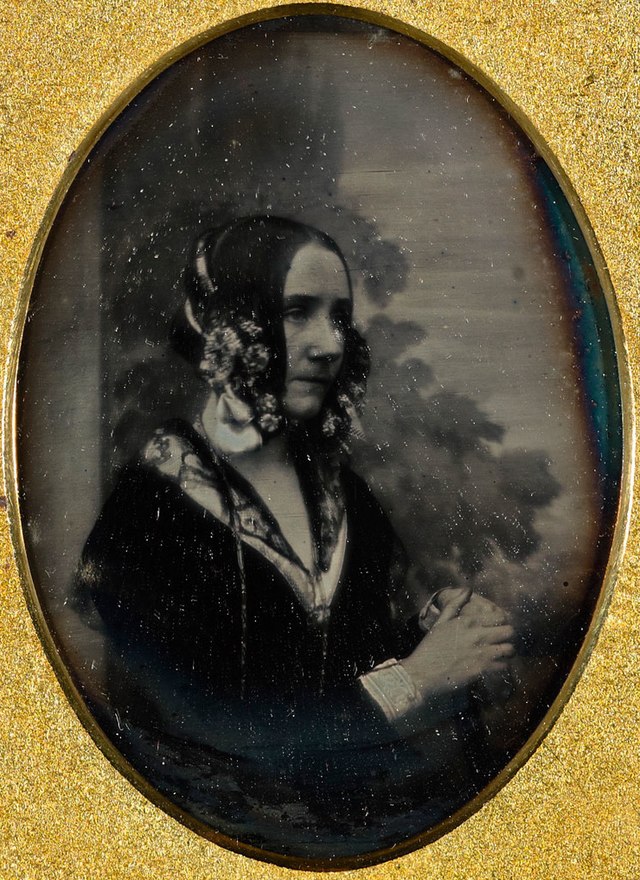
Daguerreotype taken in 1843 by Antoine Claudet in his study. At the same period Ada wrote the famous article on Babbage's analytical machine.

Letter written by Ada to Charles Babbage in 1843. The author proposes an example of a calculation that "can be worked out by the engine without first having been worked out by the head and hands of man". This is the first time the principle of the computer program is put in writing.
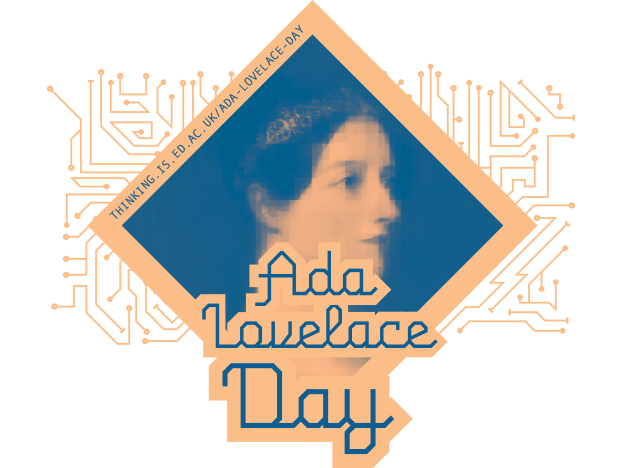
This Logo was designed in 2015 by Stuart Brett for the University of Edinburgh's Ada Lovelace Day, an international celebration day of the achievements of women in science, technology, engineering and maths (STEM).
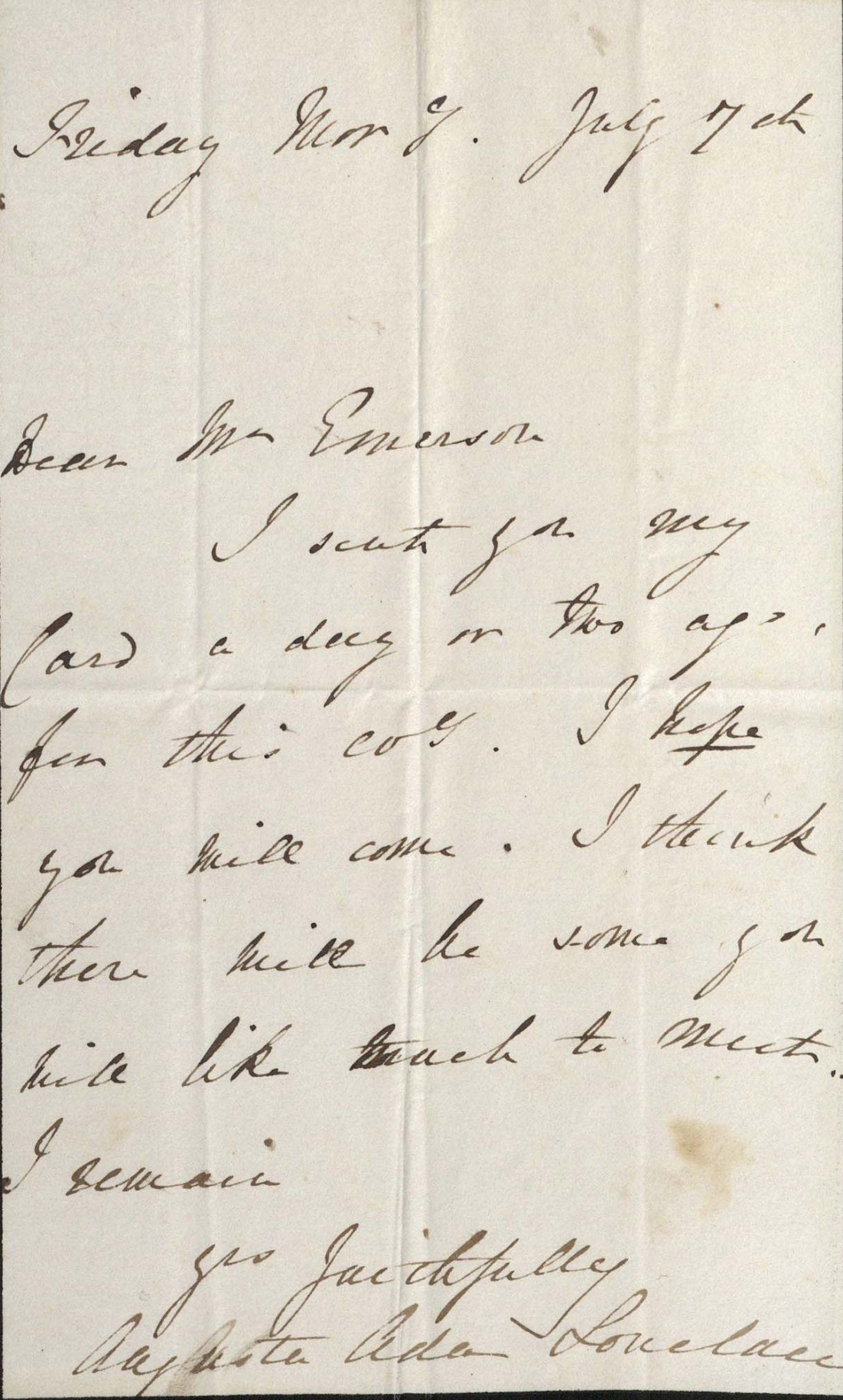
Letter written in July 7, 1848 by Lovelace to Ralph Waldo Emerson, philosopher and writer who had contact with Ada's husband Lord William Lovelace.

Article excerpted from Scientific Memoirs, Vol. 3, 1843, translated by Ada with additions from her notes and forming part of "Sketch of the analytical engine invented by Charles Babbage."
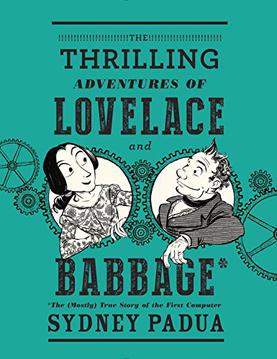
A book written by Sydney Padua publicated in 2015, which tells a hilarious series of adventures featuring Ada Lovelace and Charles Babbage. It presents an alternate reality in which the two build the Difference Engine and use it for countless purposes.
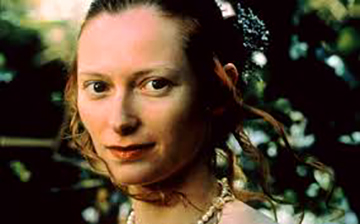
A 1997 movie produced by Lynn Hershman Leeson. Ada represents the protagonist's obsession and will be contacted by her by way of "undying information waves" to be inspired and to obtain information about her studies.

It is the two-part premiere of the twelfth series of the British science fiction television programme Doctor Who where Ada features as a character.

Let's continue with the other section...

This conceptual map represents real data extracted from the chosen topic. The purpose is to organize knowledge around the figure of Ada Lovelace, creating connections that can explain and describe the relationship between the referenced entity and the items.
In this section, the conceptual map is translated into an E/R model that considers the entities, relationships, and attributes, in this case related to the chosen theme. This graphical representation describes and represents the abstract items with their attributes, chosen to describe the scenario, and the connections between them.
The table below shows the metadata standards used by the institutions to describe the selected items. Some of them explicitly declared the standard(s) used for the data they manipulated, while for those not declared, the common standards most related to the element provided were chosen.
| Item | Type Object | Provider | Standard metadata |
|---|---|---|---|
| Ada Portrait | Image | Science museum group | ISAD(G)1 |
| Ada Picture | Image | Wikimedia | ICCD-F2 |
| Letter to Babbage | Text | British Library | EAD3 |
| Logo Ada | Image | Wikimedia | DCMI2 |
| Ada's letter | Text | Wikimedia | MODS4 |
| Article XXIX | Text | Hollis Harvard | MARC |
| Conceiving Ada | Movie | IMDB | Schema.org5 |
| Spyfall: Part two | Episode | IMDB | Schema.org5 |
| Ada potrayal | Image | Science museum group | ISAD(G)1 |
| The Thrilling Adventures of Lovelace and Babbage | Book | OPAC SBN | ISBD |
1. The Science Museum Group's collection information and access policy of October 2018, reports: "For archive collections, SMG will meet the requirements of ISAD(g): General International Standard Archival Description (International Council on Archives, 2007)".
2. Wikimedia Commons does not clearly specify the standard used, so I decided to refer to the one indicated, considering it suitable for the type of item.
3. The "Strategy and bibliographic standards" section shows a table that provides an overview of the main metadata standards followed by the Library for describing its collections: https://www.bl.uk/collection-metadata/strategy-and-standards.
4. Wikimedia Commons does not clearly specify the standard used, however the item in question comes from the Houghton Library (Harvard University), so I decided to refer to the standard used by the Harvard Library, of which the Houghton is a part. https://wiki.harvard.edu/confluence/display/LibraryStaffDoc/LibraryCloud+Metadata.
5. IMDB does not clearly specify the standard used, so I decided to refer to the one indicated, considering it suitable for the type of item.
The latter table proceeds with the alignment of metadata elements and properties useful for addressing information about people, places, dates, and subjects/concepts. Different properties are compared across standards and DC terms are used to select categories related to different information, which in turn are structured into: who?(people) where?(places) when?(dates) what?(subjects/concepts).
| Element | DcTerms | ISAD | ICCD-F | EAD | MODS | MARC | Schema | ISBD |
|---|---|---|---|---|---|---|---|---|
| Creator Designer Writer Author Engraver |
dcterms:creator | Name of creator(s) | Author | <origination> | <namePrincipal> | Personal Name | schema:creator | isbd:P1007 - "has statement of responsibility"" |
| Reproduced by | dcterms:contributor | <name> | Name of producer | schema:contributor | isbd:P1017 - "has name of producer" | |||
| Property of | dcterms:provenance | Archival history | <custodhist> | <role> | Name (custodian or owner) | schema:landlord | ||
| Published by | dcterms:publisher | Producing agency | <publisher> | Name of Publisher | schema:publisher | isbd:P1017 - "has name of publisher, producer, distributor" |
| Element | DcTerms | ISAD | ICCD-F | EAD | MODS | MARC | Schema | ISBD |
|---|---|---|---|---|---|---|---|---|
| Held in Located in Taken in |
dcterms:coverage | Existence and location of | <originalsloc> | <locationPhysical> | Holding institution | schema:locationCreated | ||
| Realized in Takes place in |
dcterms:location | Provenance | Location | <originalsloc> | <placeOfOrigin> | Place of production/ Execution |
schema:workLocation/ schema:event |
isbd:P1145 - "has parallel place of publication, production, distribution" |
| Element | DcTerms | ISAD | ICCD-F | EAD | MODS | MARC | Schema | ISBD |
|---|---|---|---|---|---|---|---|---|
| Has date | dcterms:date | Date(s) | Specific conology Generic cronology |
<maintenanceevent> | <dateCreated> | Date of a work/ Date involved |
schema:date | |
| Realized in | dcterms:created | Date(s) | Specific conology Generic cronology |
<unitdate> | <dateCreated> | Date involved | schema:dateCreated | isbd:P1021 - "has date of printing or manufacture" |
| Published in | dcterms:available | <dateValid> | Date of distribution | schema:datePublished | isbd:P1018 - "has date of publication, production, distribution" |
| Element | DcTerms | ISAD | ICCD-F | EAD | MODS | MARC | Schema | ISBD |
|---|---|---|---|---|---|---|---|---|
| Has material | dcterms:medium | Medium | Subject-technique | <phystech> | <physicalExtent > | Physical medium | schema:material | isbd:P1056 - "has composition of material" |
| Has type Has genre Has mode |
dcterms:type | Form | Object definition | <archdesc> | <genre> | Type of record | schema:Thing | isbd:P1001 - "has content form" |
| Has language | dcterms:language | Language/scripts of material | <langmaterial> | <languageOfResource> | Language of a work | schema:language | isbd:P1073 - "has note on nature, scope, form, purpose or language" | |
| Realized for | dctype:event | Scope and content | <scopecontent> | <roleRelationship> | Scope and content | schema:event | isbd:P1073 - "has note on nature, scope, form, purpose or language" | |
| Part of Work type Is copy of |
dcterms:isPartOf | Scope and content | <scopecontent> | <partType> | Related parts | schema:isPartOf | isbd:P1137 - "has common title of title proper" | |
| Has duration | dcterms:format | Extent and medium of the unit of description | Archival unit | <physdesc> | <physicalForm> | Running time | schema:Duration | isbd:P1024 - "has dimensions" |
| Has format | dcterms:hasFormat | Extent and medium of the unit of description | Archival unit | <physdesc> | <physicalForm> | Form of material | schema:fileFormat | isbd:P1003 - "has media type" |
| Title | dcterms:title | Title | Proper title | <unittitle> | <title> | Title of a work | schema:title | isbd:P1012 - "has title" |
Note: The x indicates the lack of a property related to the specific information.
The following theoretical model represented in natural language, describes all the items selected and shown earlier in the concept map, along with related information that could be added. In particular, aspects concerning some interested people (who), places (where), dates (when) and subjects/concepts (what) are enriched.
The updated E/R model graph shows the addition of the new entities and relationships designed to describe the new observations.
The last conceptual model is the graphical representation of the ontological approach chosen. It takes into account the classes and properties of existing schema models and ontologies to better describe the relationships between entities.
The graphical framework Graffoo was used for its representation.
Reference ontologies are as follows:

The following tables show the reference triples for each item written in natural language and, in the case of predicates, in the form of properties. The attributes most closely related to the different entities were chosen.
The full csv file can be downloaded.
| Subject | Predicate | Object |
|---|---|---|
| Person | dbpedia-owl:birthplace | London |
| Person | dbpedia-owl:father | Lord Byron |
| Person | eac-cpf:isInvolvedin | Article XXIX |
| Subject | Predicate | Object |
|---|---|---|
| Ada Lovelace Portrait | dcterms:created | 1840 |
| Ada Lovelace Portrait | crm:P62_depicts | Ada Lovelace |
| Ada Lovelace Portrait | fabio:HasCreator | Alfred Edward Chalon |
| Ada Lovelace Portrait | dbpedia-owl:material | Watercolor |
| Ada Lovelace Portrait | dbpedia-owl:location | Science Museum |
| Ada Lovelace Portrait | dbpedia-owl:technique | Painting |
| Ada Lovelace Portrait | crm:P7_took_place_at | England |
| Subject | Predicate | Object |
|---|---|---|
| Picture of Ada Lovelace | fabio:IsPotrayalOf | Ada Lovelace |
| Picture of Ada Lovelace | dbpedia-owl:technique | Daguerrotype |
| Picture of Ada Lovelace | crm:P14_carried_out_by | Antoine Claudet |
| Picture of Ada Lovelace | dcterms:created | 2 January 1843 |
| Picture of Ada Lovelace | crm:P7_took_place_at | Claudet's Studio |
| Picture of Ada Lovelace | dbpedia-owl:owner | Geoffrey Bond |
| Subject | Predicate | Object |
|---|---|---|
| Ada Lovelace Calculation letter | dbpedia-owl:writer | Ada Lovelace |
| Ada Lovelace Calculation letter | crm:P2_has_type | Handwritten letter |
| Ada Lovelace Calculation letter | dbpedia-owl:location | British Library |
| Ada Lovelace Calculation letter | schema:recipient | Charles Babbage |
| Ada Lovelace Calculation letter | dcterms:date | 10 July 1843 |
| Ada Lovelace Calculation letter | dcterms:language | English |
| Subject | Predicate | Object |
|---|---|---|
| Ada Day's Logo | fabio:IsPotrayalOf | Ada Lovelace |
| Ada Day's Logo | crm:P17_was_motivated_by | Ada Lovelace Day |
| Ada Day's Logo | dbpedia-owl:producedby | Stuart Brett |
| Ada Day's Logo | dcterms:date | 1 October 2015 |
| Subject | Predicate | Object |
|---|---|---|
| Ada Lovelace Letter | dbpedia-owl:writer | Ada Lovelace |
| Ada Lovelace Letter | dbpedia-owl:location | Houghton Library |
| Ada Lovelace Letter | crm:P89_falls_within | Harvard University |
| Ada Lovelace Letter | dcterms:language | English |
| Ada Lovelace Letter | dbpedia-owl:writer | Ada Lovelace |
| Ada Lovelace Letter | schema:recipient | Ralph Waldo Emerson |
| Ada Lovelace Letter | crm:P2_has_type | Handwritten letter |
| Ada Lovelace Letter | dcterms:date | 7 July 1848 |
| Subject | Predicate | Object |
|---|---|---|
| Article XXIX | fabio:isManifestationOf | Translation and addition of notes |
| Article XXIX | dcterms:ispartof | Sketch of the analytical engine invented by Charles Babbage |
| Article XXIX | dcterms:hasformat | Scanned copy |
| Subject | Predicate | Object |
|---|---|---|
| Conceiving Ada | crm:P129_is_about | Ada Lovelace |
| Conceiving Ada | dcterms:date | 19 February 1999 |
| Conceiving Ada | fabio:hasEmbodiment | Movie |
| Conceiving Ada | dbpedia-owl:director | Lynn Hershmann-Leeson |
| Conceiving Ada | crm:P84_had_at_most_duration | 1 hour 25 minutes |
| Conceiving Ada | crm:P108_i_was_produced_by | Complex Corporation Hotwire Productions Outpost Studios |
| Conceiving Ada | dbpedia-owl:genre | Drama Fantasy Science Fiction |
| Conceiving Ada | dcterms:language | English |
| Subject | Predicate | Object |
|---|---|---|
| Spyfall:Part two | dcterms:language | English |
| Spyfall:Part two | dcterms:ispartof | Tv Series |
| Spyfall:Part two | dbpedia-owl:genre | Adventure Drama Science Fiction |
| Spyfall:Part two | dbpedia-owl:televisiondirector | Lee Haven Jones |
| Spyfall:Part two | dcterms:date | 5 January 2020 |
| Subject | Predicate | Object |
|---|---|---|
| Ada Potrayal | dcterms:date | 1893 |
| Ada Potrayal | fabio:hasCreator | Alfred Edward Chalon |
| Ada Potrayal | dbpedia-owl:publisher | Bentley Richard & Son |
| Ada Potrayal | isbd:P1007 | Joseph Brown |
| Ada Potrayal | dbpedia-owl:technique | |
| Ada Potrayal | crm:P62_depicts | Ada Lovelace |
| Subject | Predicate | Object |
|---|---|---|
| Book | dcterms:format | Text |
| Book | dcterms:title | The thrilling adventures of Lovelace and Babbage |
| Book | fabio:hasCreator | Padua Melina Sydney |
| Book | dcterms:language | English |
| Book | dcterms:date | 2015 |
| Book | dcterms:type | Monography |
| Book | dbpedia-owl:publisher | Particular Books |
The first step in the production of RDF concerns naming: the URIs of some of the entities most closely related to Ada Lovelace and three items selected with reference to the topic (Ada potrayal, Ada Lovelace letter, Spyfall: Part-two), were identified.
https://w3id.org/adalod
https://w3id.org/adalod/place/london
https://w3id.org/adalod/person/lord-byron
https://w3id.org/adalod/image/ada-potrayal
https://w3id.org/adalod/image/ada-potrayal/date/1893
https://w3id.org/adalod/image/ada-potrayal/person/joseph-brown
https://w3id.org/adalod/image/ada-potrayal/person/alfred-edward-chalon
https://w3id.org/adalod/letter/ada-lovelace-letter
https://w3id.org/adalod/letter/ada-lovelace-letter/date/7-july-1848
https://w3id.org/adalod/letter/ada-lovelace-letter/language/english
https://w3id.org/adalod/image/ada-day-s-logo/institution/harvard-university
https://w3id.org/adalod/image/ada-day-s-logo/person/ralph-waldo-emerson
https://w3id.org/adalod/tvseries/spyfall-part-two
https://w3id.org/adalod/tvseries/spyfall-part-two/date/5-january-2020
https://w3id.org/adalod/tvseries/spyfall-part-two/person/lee-haven-jones
https://w3id.org/adalod/tvseries/spyfall-part-two/person/sylvie-briggs
https://w3id.org/adalod/tvseries/spyfall-part-two/genre/science-fiction
In the next step, prefixes are defined for the chosen ontologies, to which are added those of other significant resources and authorities, and triples are written according to Turtle syntax.
Validated by IDLab Turtle Validator
The final knowledge graph is a visual representation of the RDF data collected.
Realized with RDF Grapher
AdaLod is a Linked Open Data project realized for the "Knowledge Organization and Cultural Heritage" course of the Master's Degree in Digital Humanities and Digital Knowledge of the University of Bologna. This website was developed by Ludovica Russo.